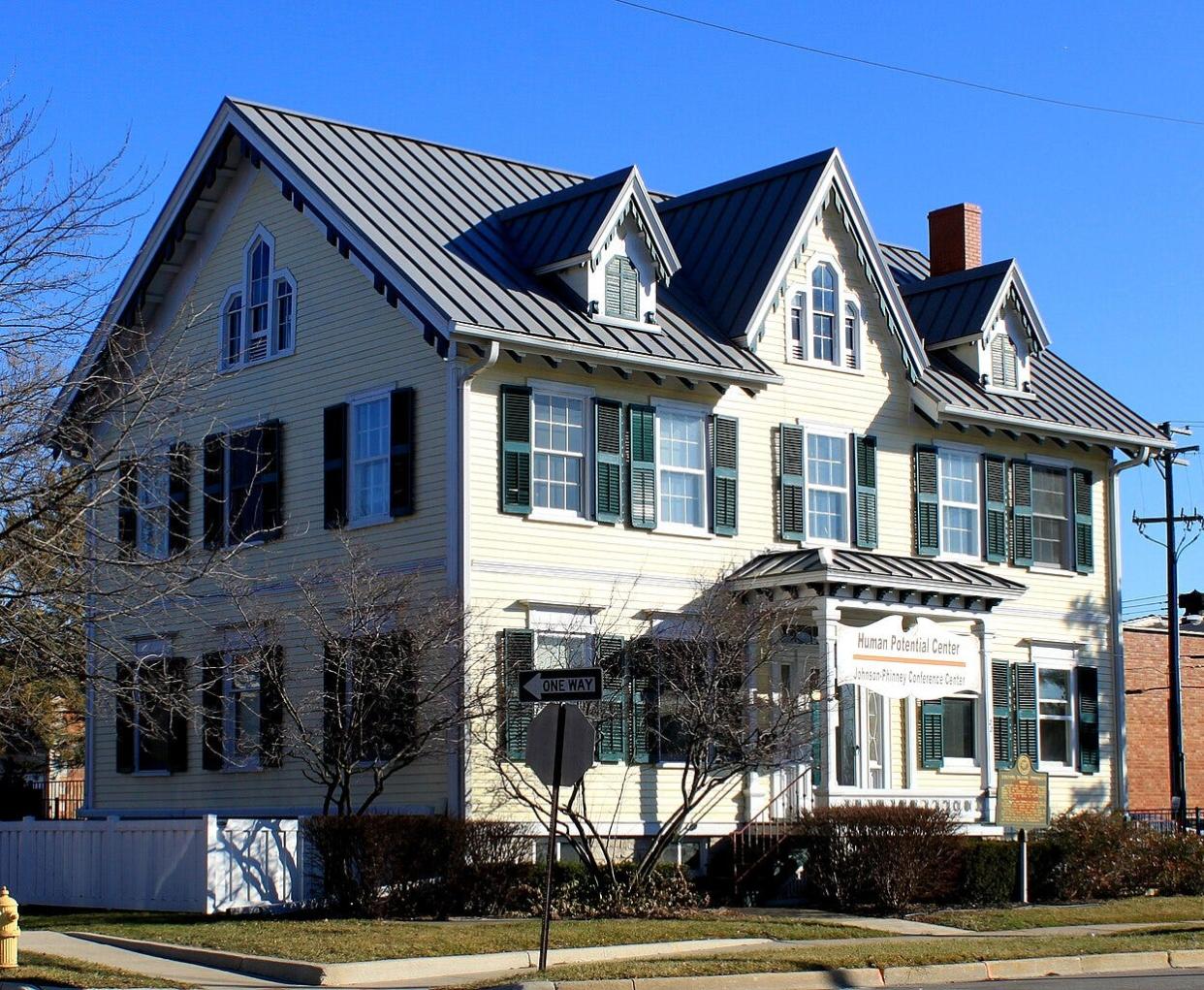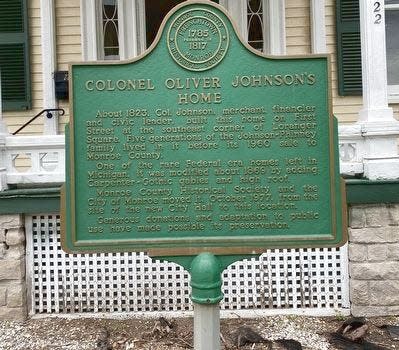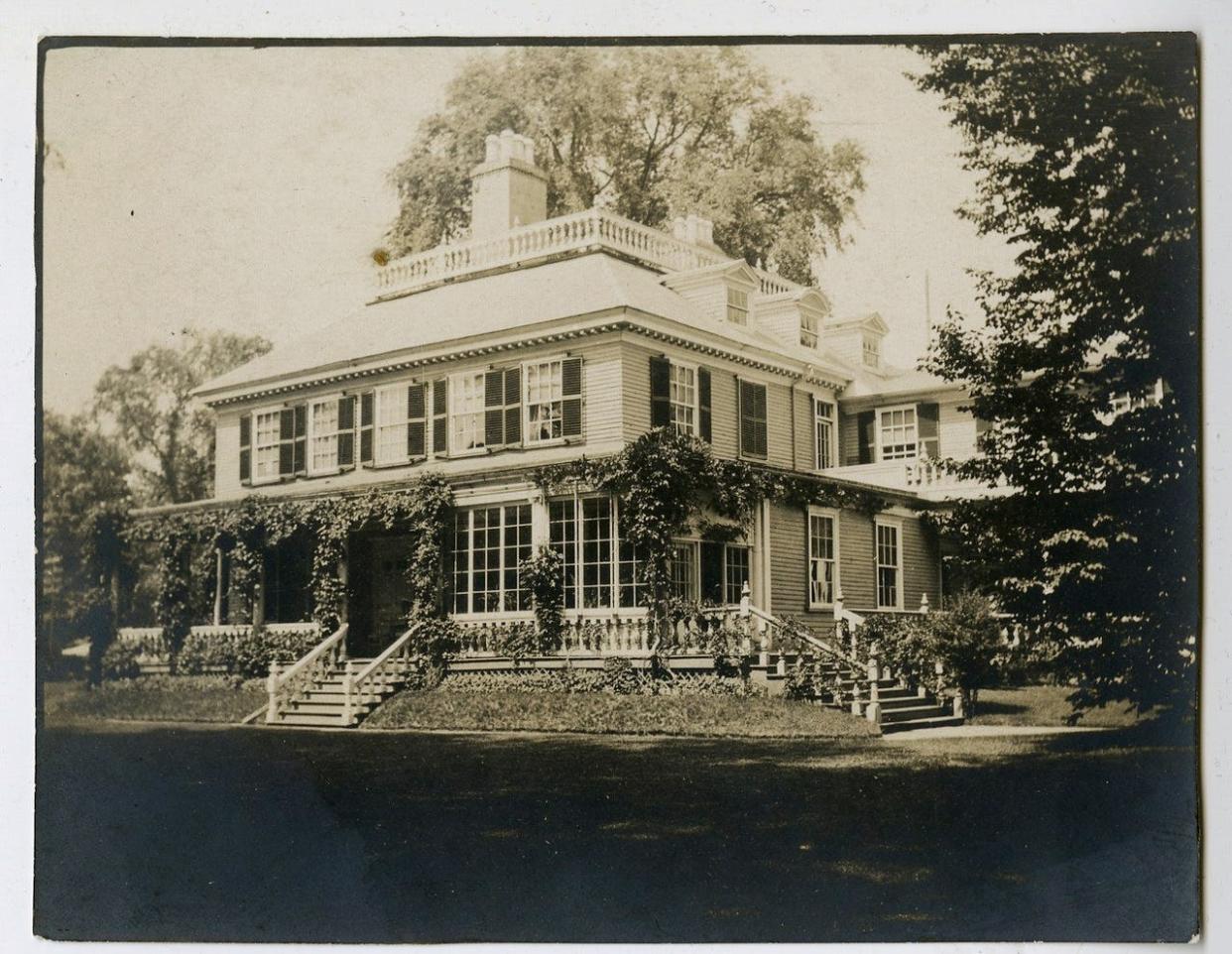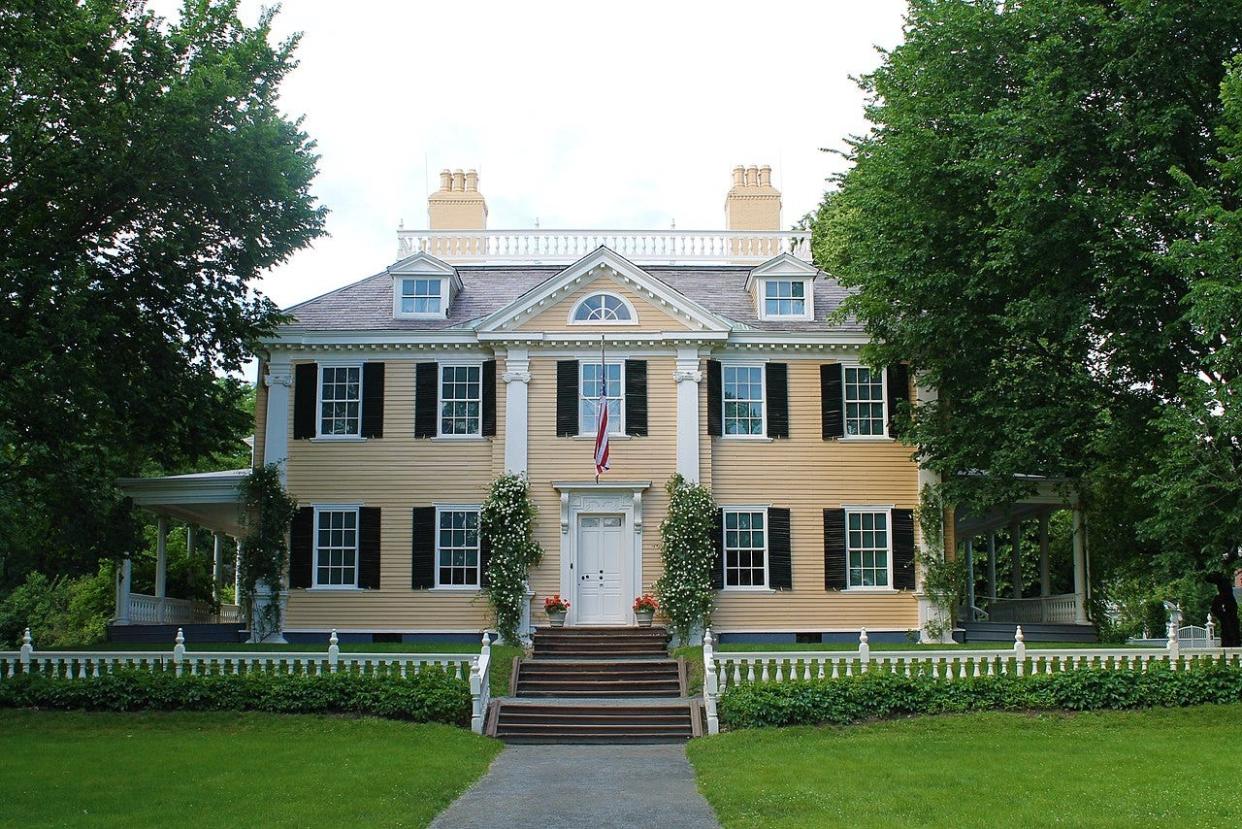Design of Johnson-Phinney house may have been influenced by George Washington's house
MONROE — Bill Saul, president of the Monroe County Historical Society, is dedicated to leading our organization through active participation in preserving Monroe’s historic structures — including our own MCHS headquarters. Saul is also actively working on clean energy-related initiatives, especially the development of solar farms in Monroe County and throughout Michigan.
One could say that Saul has “one foot in the past and the other in the future."
According to Saul, “We (the MCHS) own Monroe’s historic Johnson-Phinney house built in 1822. It was built by Colonel Oliver Johnson — merchant, financier and civic leader — on First Street at the southeast corner of Loranger Square.

Five generations of the Johnson-Phinney family lived there before its 1960 sale to Monroe County. James Monroe was the president at that time. I have discovered a very interesting connection to George Washington with the house. Washington lived in Cambridge, Mass., in a home known as Washington’s Headquarters.
He lived in the large home with Federal-style influences that looks very much like our Johnson-Phinney House. I believe our house’s design may have been influenced by Washington’s Headquarters. Because of a large endowment, the original house is now called the Longfellow House and Washington’s Headquarters. The house is managed by the National Park Service (NPS).”

According to Historic Cambridge.org documentation, in 1759, John Vassall Jr. built what became today’s Longfellow House and Washington’s Headquarters. Vassall’s family had inherited wealth and opulence from the family’s Jamaican sugar plantations.
Emigrating to Cambridge to take advantage of the growing cultural and educational opportunities Cambridge and the greater Boston area had to offer (Harvard was founded over 100 years earlier in Cambridge in 1636), the Vassall family also brought slaves and their British loyalties to the area. It was these issues that would eventually force them to evacuate family homes (seven of them) built in and around what is now Brattle Street. The 97-acre Longfellow House and Washington’s Headquarters included, in its heyday, barns, formal gardens, orchards and meadows.

When the Continental Congress seized the Longfellow House and Washington’s Headquarters in 1774, it was prepped to house Washington, who had previously stayed at the residence of Harvard’s president. Washington lived in the Longfellow House from July 2, 1775, to April 4, 1776.
In the 1790s, after having been abandoned following the founding of the American Colonies, the Longfellow House and Washington’s Headquarters were acquired by Andrew Craigie (1754–1819). Craigie is best known for serving as the first Apothecary General of the Continental Army during the American Revolution — essentially, its chief pharmacist.

Craigie developed much of East Cambridge, Mass., and was responsible for the construction of the Canal Bridge connecting East Cambridge and Boston, which later became known as the Craigie Bridge. Craigie also later rebuilt it and named it the Charles River Dam Bridge, but locals and historians still referred to it as Craigie's Bridge.
It was after Craigie’s death in 1819 that the property was subdivided to satisfy mounting debts. Craigie’s widow, to raise money, took in a young Henry Wadsworth Longfellow in 1837 as a border. In 1843, Longfellow and his young bride, Francis Appleton, received the house and five acres of land surrounding it as a wedding gift from her father, Nathan Appleton.
Subscribe Now: For all the latest local developments, breaking news and high school sports content.
The Longfellow House and Washington’s Headquarters has many visual connections to Monroe’s Johnson-Phinney House. Both homes share Federal-style architectural details (though the Longfellow House and Washington’s Headquarters, according to a 1974 NPS Structure Report prepared by John Luzader, is identified as English Palladian; its Federal-style additions were added after the Revolutionary War). Their color schemes and use of shutters are also similar.
For more information about the Monroe County Historical Society, visit monroecountyhistoricalsocietymi.org.
— Tom Adamich is president of Visiting Librarian Service, a firm he has operated since 1993. He also is project archivist for the Greening Nursery Co. and Family Archives and the electric vehicle awareness coordinator at Monroe County Community College.
This article originally appeared on The Monroe News: Design of Johnson-Phinney house may have been influenced by George Washington's house
